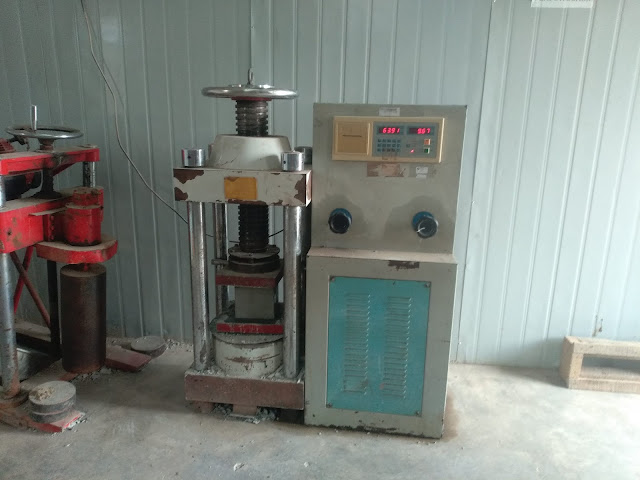PROPERTIES OF HARDENED CONCRETE
In construction industry, concrete exist as most popular building material exist in two forms as fresh concrete and hardened concrete.
Fresh concrete, this is concrete in plastic state that can be poured or casted in different shaped forms to form artificial hard rock on hardening.
Hardened concrete, this is the concrete in solid form, concrete that lost its plasticity property so it can not be poured or casted in forms.
Concrete in each form or state has its specific properties which describe its behaviors in different conditions during its lifetime.
The following are the properties of hardened concrete which describe how hardened concrete behaves and how they affected by external surrounding.
Strength
Strength, this is the ability of hardened concrete to withstand induced stresses in structure where is going to be used.
The strength of concrete can be expressed in three kinds, due to different kinds of stresses that exist from structure usage, here we have compressive strength, flexural strength and shear strength.
 |
| Compressive strength testing of concrete cubes |
Durability
Durability, this is property of concrete to maintain its original form, quality, and serviceability when exposed to its intended environment, this refers to ability of concrete its functions in structures for which it has designed for whole designed life.
One of the chief characteristics influencing durability of concrete is its permeability to allow ingress of water and other deleterious materials.
Durability of concrete is affected by number of factors such as follows
1. Presence of deleterious materials in aggregates that used in concrete mixing such as coatings, organic impurities.
2. Concrete with higher slump value (collapse slump) due to having excess water.
3. Contaminated mixing water such as water with high fines (turbidity) or organic impurities.
4. The permeability of concrete.
Impermeability
Impermeability, this is property of concrete of not allowing passage of water through its pores.
Concrete should be less permeable if not impermeable so as to protect inside reinforcements from any corrosive attack.
Usually, concrete allows water passage through it's self at very small amount, and low rate due to presence of micro pores in it, which is not possible to remove all of them and have greater function in reducing cracks due to shrinkage and expansion.
Shrinkage
Shrinkage, this is the volume reduction of h concrete during it's drying and hardening, shrinkage produces tensile stresses in the concrete which lead to formation of cracks on concrete surfaces.
Concrete shrinkage occurs in different ways and reasons, this lead us to having different kind of concrete shrinkage commonly plastic shrinkage, autogenous shrinkage and dry shrinkage.
Plastic shrinkage
This kind of surface shrinkage occurs at a time when concrete in plastic state is casted in forms, this happen due to loss of moisture due to evaporation.
This kind of shrinkage caused most of surface cracks of concrete that can be seen to appear first days, this shrinking process stops as concrete surface has changed from plastic to solid state.
Autogenous shrinkage
This is the shrinkage of concrete due to chemical reaction that occur between cement and water.
This shrinkage occurs on early stages of hydration reaction when water react with C3S ( Cement clinker component), when their reaction stops also shrinkage stops.
This shrinkage cause very small percent in volume reduction of concrete, also induce negligible stresses to concrete.
Dry shrinkage
This is long lasting shrinkage process that occurs due to loss of water held in gel pores of concrete.
Soft aggregates used in making concrete causes higher shrinkage with low shrinkage stresses while harder aggregates lead to lower shrinkage with higher shrinkage stresses.
Creep
Creep, this is property of hardened concrete which describes concrete tend to continue to deform plastically (increase strain) on sustained load, concrete strain increases without any increase in induced stress level.
Creep strain depends primary on the duration of sustained loading, so when loading is removed the deformation stops, this property increases deflections in beams and slender columns with the same applied loads.





Comments
Post a Comment